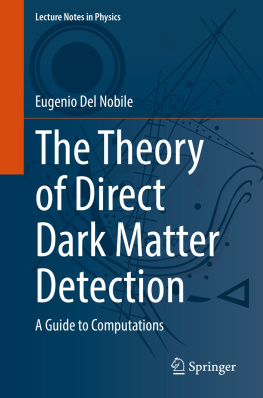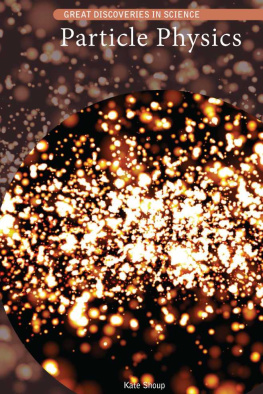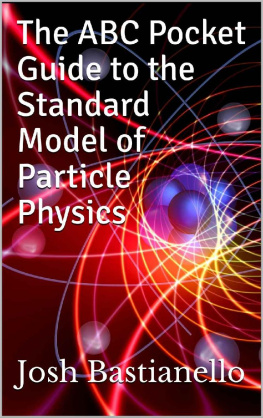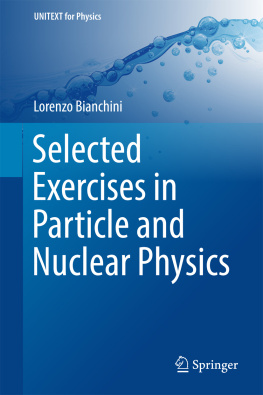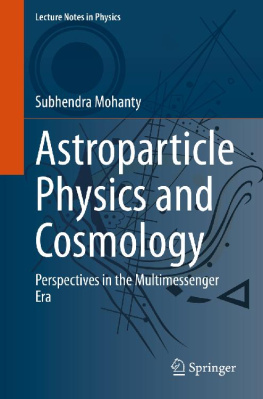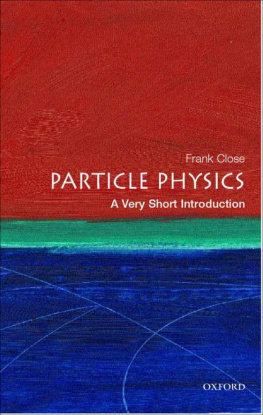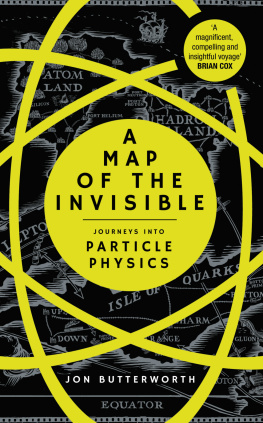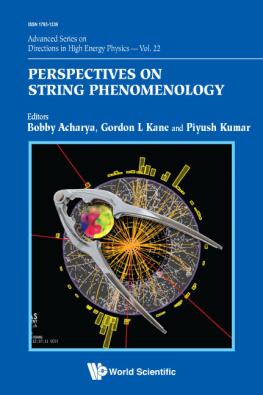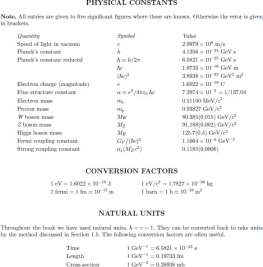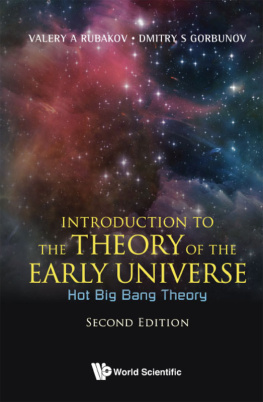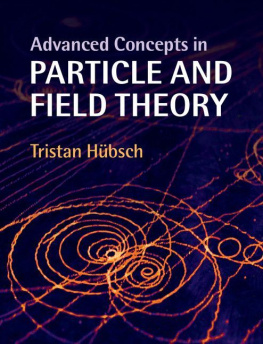Volume 996
Lecture Notes in Physics
Series Editors
Roberta Citro
Salerno, Italy
Peter Hnggi
Augsburg, Germany
Morten Hjorth-Jensen
Oslo, Norway
Maciej Lewenstein
Barcelona, Spain
Angel Rubio
Hamburg, Germany
Wolfgang Schleich
Ulm, Germany
Stefan Theisen
Potsdam, Germany
James D. Wells
Ann Arbor, MI, USA
Gary P. Zank
Huntsville, AL, USA
Founding Editors
Wolf Beiglbck
Heidelberg, Germany
Jrgen Ehlers
Potsdam, Germany
Klaus Hepp
Zrich, Switzerland
Hans-Arwed Weidenmller
Heidelberg, Germany
The series Lecture Notes in Physics (LNP), founded in 1969, reports new developments in physics research and teaching - quickly and informally, but with a high quality and the explicit aim to summarize and communicate current knowledge in an accessible way. Books published in this series are conceived as bridging material between advanced graduate textbooks and the forefront of research and to serve three purposes:
to be a compact and modern up-to-date source of reference on a well-defined topic;
to serve as an accessible introduction to the field to postgraduate students and non-specialist researchers from related areas;
to be a source of advanced teaching material for specialized seminars, courses and schools.
Both monographs and multi-author volumes will be considered for publication. Edited volumes should however consist of a very limited number of contributions only. Proceedings will not be considered for LNP.
Volumes published in LNP are disseminated both in print and in electronic formats, the electronic archive being available at springerlink.com. The series content is indexed, abstracted and referenced by many abstracting and information services, bibliographic networks, subscription agencies, library networks, and consortia.
Proposals should be sent to a member of the Editorial Board, or directly to the responsible editor at Springer:
Dr Lisa Scalone
Springer Nature
Physics
Tiergartenstrasse 17
69121 Heidelberg, Germany
lisa.scalone@springernature.com
Eugenio Del Nobile
The Theory of Direct Dark Matter Detection
A Guide to Computations

Logo of the publisher
Eugenio Del Nobile
Padua, Italy
ISSN 0075-8450 e-ISSN 1616-6361
Lecture Notes in Physics
ISBN 978-3-030-95227-3 e-ISBN 978-3-030-95228-0
https://doi.org/10.1007/978-3-030-95228-0
The Editor(s) (if applicable) and The Author(s), under exclusive license to Springer Nature Switzerland AG 2022
This work is subject to copyright. All rights are solely and exclusively licensed by the Publisher, whether the whole or part of the material is concerned, specifically the rights of translation, reprinting, reuse of illustrations, recitation, broadcasting, reproduction on microfilms or in any other physical way, and transmission or information storage and retrieval, electronic adaptation, computer software, or by similar or dissimilar methodology now known or hereafter developed.
The use of general descriptive names, registered names, trademarks, service marks, etc. in this publication does not imply, even in the absence of a specific statement, that such names are exempt from the relevant protective laws and regulations and therefore free for general use.
The publisher, the authors and the editors are safe to assume that the advice and information in this book are believed to be true and accurate at the date of publication. Neither the publisher nor the authors or the editors give a warranty, expressed or implied, with respect to the material contained herein or for any errors or omissions that may have been made. The publisher remains neutral with regard to jurisdictional claims in published maps and institutional affiliations.
This Springer imprint is published by the registered company Springer Nature Switzerland AG
The registered company address is: Gewerbestrasse 11, 6330 Cham, Switzerland
Preface
The nature of dark matter (DM), invisible matter whose existence is only inferred through its gravitational influence on other objects, is one of the biggest mysteries in modern physics and astronomy. A vast experimental program is currently in place to establish detection through non-gravitational DM signatures, at the forefront of which are direct searches. Unlike other detection strategies which rely on indirect evidences of its existence, direct detection experiments aim at directly uncovering DM, traditionally by observing recoils of detector nuclei struck by passing DM particles. The rate and energy spectrum of these nuclear recoils can then be matched with what is predicted by theoretical models to pin down the properties of DM. This highlights the need of performing accurate theoretical computations to be compared with experimental data.
These notes have been written with the aim to provide extensive guidance for computations in direct DM detection phenomenology. They are a pedagogical yet general and model independent manual, with examples from standard and non-standard particle DM models. They feature self-contained chapters on non-relativistic (NR) expansion, elastic and inelastic scattering kinematics, DM velocity distribution, hadronic matrix elements, nuclear form factors, cross sections, rate spectra, and parameter-space constraints as well as a handy two-page summary and Q&A section for a quick reference.
Direct detection experiments are traditionally concerned with DM in the form of weakly interacting massive particles (WIMPs); for this reason, in these notes, we use DM as a synonym for WIMP. We do not, however, enforce any strict definition of WIMPs, rather thinking of them in broad terms, as DM particles that can be detected on Earth through scattering off nuclei. In this sense, we will not delimit the range of WIMP mass a priori, but rather work out what masses experiments can be sensitive to. Likewise, we will not focus on any specific WIMP candidate, but rather try to be as general and model independent as possible.
These notes are organized as follows. We first discuss the general grounds of direct DM detection in Chap. , which also features a handy Q&A section.
These notes ideally follow the spirit of the Review of mathematics, numerical factors, and corrections for dark matter experiments based on elastic nuclear recoil by J. D. Lewin and P. F. Smith , although without its convenient conciseness. Computations are worked out in all their crucial steps, and a number of examples are presented throughout to complement and illustrate the theoretical arguments. A code for generating most of the figures of these notes is also publicly available on this working as a frame to the various parts.
An effort has been made to present the material of these notes in a form compatible with the different notations adopted in the literature, so that it is readily comparable with results found elsewhere. The discussion is kept as general as possible; however, we restrict ourselves to elementary DM particles with spin 0 and 12 in our examples in Chaps.. Assumptions are spelled out systematically, and our notation is summarized in a stand-alone chapter for a quick reference.

